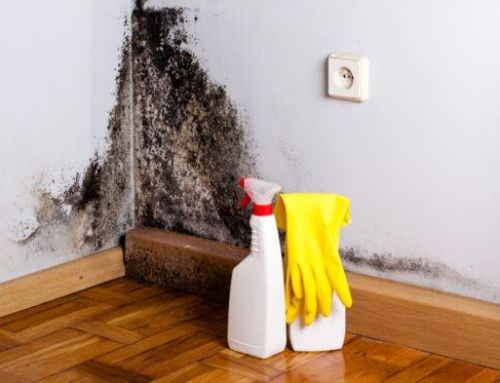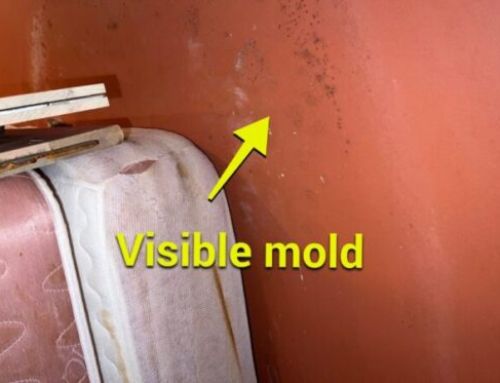The terms mold and mildew are often used interchangeably. However, they mean two very different things. While both are fungi and both thrive in dark, damp, and balmy spaces, unchecked mold has a serious impact on human health. Where mildew is odorous and unsightly, mold undermines the integrity of building structures, diminishes property values, and sets the stage for major respiratory issues. If you’ve got excess humidity in your Lake Zurich, Illinois home, and if you’ve got moist, discolored, and odor-ridden surfaces, it’s important to know exactly what you’re dealing with.
How Are Mold and Mildew Different?
Mold is a fungal growth. It can form on any damp surface, but it’s most commonly found on decaying organic matter. Not all fungi are mold. For instance, there’s a vast range of edible fungi that are actually lauded for their health benefits. There are more than 100,000 types of mold, and each has its own unique properties. Some molds are refined and used to create antibiotics like penicillin, and others permeate the indoor air and cause many of the ailments that penicillin is used to treat. For instance, if you have a pervasive black mold growing in your home and don’t know it, you may be using a mold-derived medication to deal with recurring chest, ear, or sinus infections.
Mildew refers to specific types of fungi. Like mold, it often forms in damp and balmy spaces, but it’s unlikely to cause physical symptoms or serious health issues. Having mildew in your home won’t necessarily impact your indoor air quality, exacerbate chronic respiratory ailments, or cause other mold-related health problems like fatigue, brain fog, and general malaise.
If you have a fruit basket, you may find an orange or a lemon that’s grown soft and smelly. Moreover, this same citrus fruit could be covered in a fuzzy, greenish, or whitish coating that will spread to all other fruits if the culprit isn’t removed. This is mold. It can exist in a variety of colors, including pink, grey, white, purple, black, and brown. Mold can have different textures too. It can be slimy, patchy, or hairy-looking, and it’s often raised. Comparatively, mildew is typically white or gray, and it has a flat, dusty, or chalky appearance. Where mildew exists, there’s often a musky, dank, and pungent odor as well. Damp clothes and carpeting tend to develop mildew. However, when moisture issues exist, mildew can be found on windowsills, walls, and other building materials too.
Which Is Worse?
Both mold and mildew are indicative of indoor moisture issues. If there’s a problem with excess humidity in your home, there’s a very high likelihood that both mold and mildew are present together. Although mold will have a greater impact on human health (and pet health), mildew is a good indication that mold is either already there or on its way.
Finding collections of smelly, powdery mildew in your home sometimes points to a localized moisture problem. If you’ve ever tossed a damp dish rag or towel into your laundry basket and forgotten about it, the most likely fungus to form is mildew. If you have a leaky pipe under your sink, a leaky appliance connection, or windows with broken seals, you’ve probably got mold instead. Mold thrives in spaces that have consistent moisture problems.
Root Systems and Clean-up: The Difference That Really Matters
The biggest and most important difference between the two is that mildew can be cleaned with virtually minimal effort. Mildew can be eradicated by washing and thoroughly drying the affected surfaces or items and by using a number of common household cleaning agents. Mold cannot.
Although products like bleach are marketed as being able to kill mold, they have major limitations in this capacity. For instance, if you have mold-covered tiles, bleach can kill and eliminate the mold on all sealed, non-porous areas. However, if the mold affects unsealed and porous tile grout, you need a professional. This is because, unlike mildew, mold has fast-growing root systems that are comprised of mycelium, rhizoids, and hyphae. On porous surfaces, the mold that you see isn’t the only mold that’s present. This is why when you bleach mold on a windowsill or wall, it whitens temporarily but returns within a matter of days or weeks. On porous surfaces, cleaning agents like vinegar, rubbing alcohol, and bleach are impartial, temporary solutions for mold.
What Does It Take to Get Rid of Mold?
With mildew, it’s often only necessary to clean the affected area and avoid repeating the problem that caused mildew to form in the first place. For instance, rather than putting damp dish rags or towels into your laundry bin to fester, you should hang these up to dry first or wash and dry them right way. If you keep your laundry bin dry and clean and free of damp, dirty items, you should be able to avoid repeat problems with mildew altogether.
However, if your mildew-ridden laundry basket was positioned by a wall and if it regularly held damp items, the wall itself may have colorful, raised patches of mold. Unfortunately, the same strategies that worked for mildew won’t work here. Wherever mold exists, an unseen network of mold roots exists as well.
With mold, effective treatment always starts by eliminating the source of excess moisture. In many homes, this means:
- Finding and fixing slow and hidden leaks
- Sealing up or replacing leaky windows
- Installing whole-house dehumidification equipment when needed
When mold is an indoor problem, it makes no sense to disinfect and deodorize the affected surfaces until the source of excess moisture has been dealt with. If plumbing leaks or other problems remain, even the most effective mold treatments won’t work.
Options in Effective Mold Treatment
The next step in mold remediation is to eradicate both visible mold and its unseen root systems. In some instances, this involves disinfecting and sealing the treated areas. In others, it entails eliminating and replacing affected items that cannot be thoroughly cleaned. For instance, how do you get rid of mold and mold roots on a severely mold-infested sofa or armchair?
Among the most effective and least invasive mold treatments is ultraviolet sanitization. With UV sanitization, no bleaching agents are required, no furniture or carpeting needs to be removed, and all affected surfaces and materials can be cleaned. This means being able to retain more of your personal items in instances in which mold infestation is widespread. UV sanitization addresses both surface mold and root systems that might otherwise cause mold problems to recur. These treatments are a popular choice for homes that have been affected by burst pipes, whole-house plumbing backups, floods, and other issues.
At Pur360, we use a patented ultraviolet sanitization process as part of our mold treatments. We offer mold testing, mold remediation, and odor removal services. All of our technicians are certified and go through an extensive training program on how to properly use the Pur360 process to eradicate mold, allergens, odors, and more. Proudly serving residents of Lake Zurich, Illinois, we also provide painting, drywall removal, and drywall repair services. Give us a call today!



